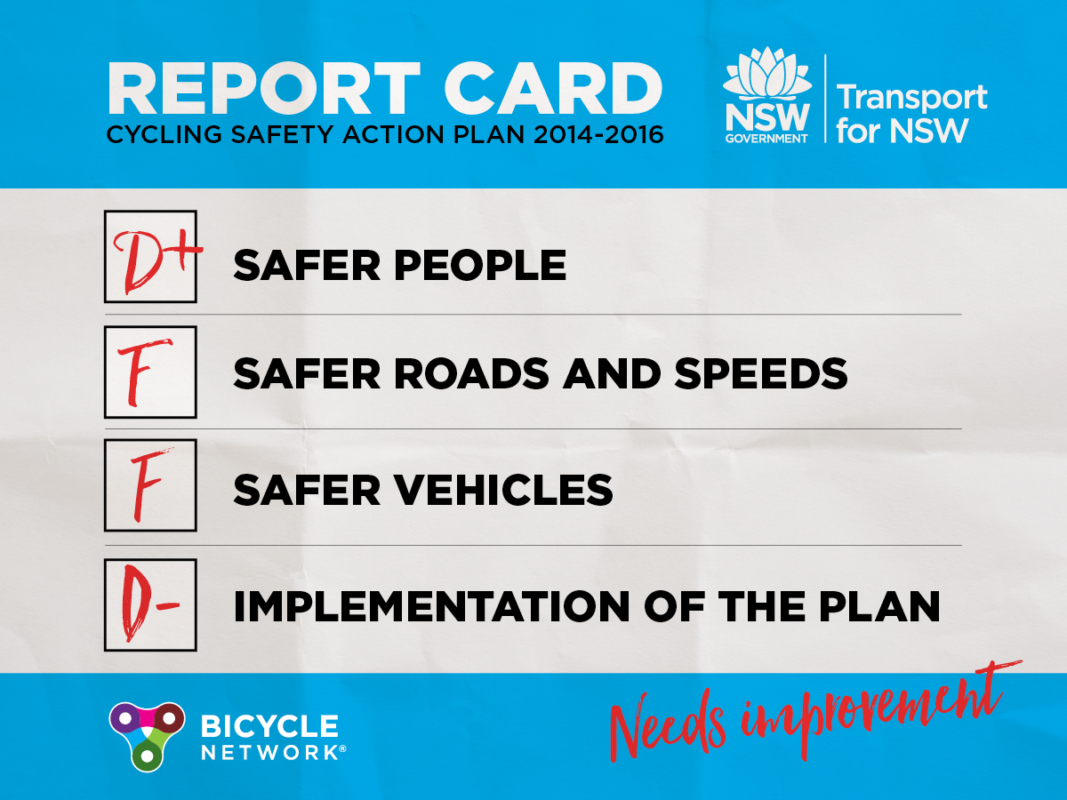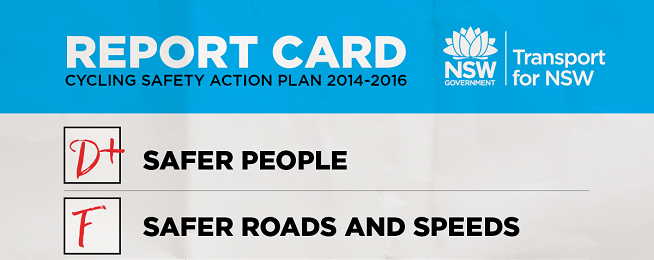The Cycling Safety Action Plan 2014-2016 that was developed by Transport for New South Wales (TfNSW) has failed in its promise “to make cycling a safe and positive activity in New South Wales”.
37 actions to get more people on bikes were outlined in the strategy but the majority have not been delivered – or at best, their implementation is unclear.
The actions listed by the government were set into four main categories: safer people, safer roads and speeds, safer vehicles, and implementation of the action plan.
We've identified some specific actions from these categories, looked into how they were carried out and given a mark for each category.
- Safer people: TfNSW did not work with bicycle user organisations like Bicycle Network to develop information, resources and training programs to increase road safety for bike riders. While the 'Go Together' campaign was launched, it initially included a proposal to target bike riders by forcing the carriage of ID.
Mark: D+ - Safer roads and speeds: TfNSW did not create bike-friendly neighbourhoods for people of all ages and abilities. Bike boxes were not installed at intersections on key locations in urban areas, and no evidence was provided of increasing safety for bike riders on high speed roads. Other opportunities to implement low-cost traffic calming measures such as lowering traffic speeds were also missed.
Mark: F - Safer vehicles: TfNSW did not promote the sale and use of high-visibility and other safety devices through partnerships with bicycle shops. The objective of this part of the plan was to make drivers more alert to bike riders on the road, but there are no corresponding actions further outlined in the plan.
Mark: F - Implementation of the plan: It appears that TfNSW did not establish a working group to oversee the implementation of the cycling safety action plan since most of the actions were not carried out. RMS has however managed to hold annual regional forums on cycling with key stakeholders in the public, private and community sectors across the state.
Mark: D-
The plan also noted that safety concerns are a “major barrier to people cycling” and that “safe connectivity to infrastructure” is important, but strategies focused mostly on safety measures such as improving rider visibility, road rule compliance and driver awareness.
While these strategies are important, building safe, separated infrastructure that stops bikes from mixing it with cars was ignored, even though it is known to be the number one way to get more people riding.
The City of Sydney has recognised this and invested in separated bike lanes in recent times, with the results promising.
While the 2017 National Cycling Participation outed New South Wales as the state with the least amount of bike riders overall, the City of Sydney recorded a 6% increase in bike rider numbers from the last survey. 20% of residents ride a bike in a typical week, up from 14% in 2015.
The Centre for Road Safety at TfNSW is in the process of developing its new Road Safety Plan 2021. This represents a great opportunity for the NSW Government to rectify its failure and build a better, safer environment for bike riders of all ages and abilities.

See what we're doing to make NSW a better place to ride and how you can help.
Find out more

